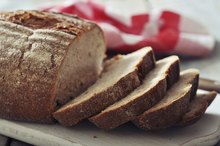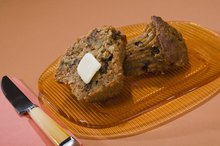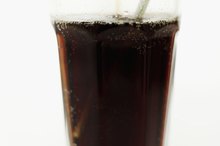Calories in a Tablespoon of Peanut Butter
From crunchy to creamy and from unsalted to flavored, seemingly endless variations exist for this classic nut spread. First developed in the 1890s, peanut butter has become a dietary staple of most school-aged children, and is found in many snacks and desserts. Keep in mind that the caloric density of peanut butter will enable you to incorporate this tasty spread into your diet without overshooting your daily calorie needs.
Calories in Peanut Butter
The calories in one tablespoon of peanut butter vary by variety and brand. Creamy and crunchy varieties are the common types of unflavored peanut butter. One tablespoon of creamy or crunchy peanut butter ranges from 70 to 100 calories. Keep in mind that the nutrition label for peanut butter declares one serving of peanut butter to be two tablespoons, so you must divide the nutrition label numbers by two to calculate the nutrition of one tablespoon.
Peanut Butter Is High in Calories
Twinkies Nutrition
Learn More
The high-caloric density of peanut butter is because of its high fat content. Although peanuts are classified as a legume, most sources group them with other nuts such as almonds, walnuts and cashews, because of their similar characteristics, including fat content. Depending upon the brand, a tablespoon of peanut butter may contain between 6 and 8 grams of total fat. Peanut butter contains a combination of “unhealthy” saturated fat, as well as “healthy” poly- and mono-unsaturated fats, depending upon the type of peanut butter.
Peanut Butter 2.0
Peanut butter companies have developed flavored peanut butters, incorporating popular combinations of flavors into one jar, and the companies also offer enhanced peanut butters. Flavored peanut butters available in grocery stores include hazelnut, chocolate and honey. Additional enhancements of peanut butters include adding omega-3 fatty acids or removing sugar and sodium. These enhancements minimally alter the calorie content.
Diet Peanut Butter
Calories & Sugar in Skim Milk
Learn More
To accommodate calorie counters, peanut butter companies have developed more diet-friendly peanut butters by decreasing the fat or carbohydrate content. Unfortunately, to maintain flavor, calories are typically reincorporated in the form of carbohydrates or fats, depending on which type the company removed to decrease the calories, with the overall result being a minimal reduction in total calories.
Related Articles
References
Writer Bio
Based in Pittsburgh, Penn., Alandra Greenlee is co-founder of two startups. Using her medical degree, she is dedicated to spreading health and knowledge through digital health. Greenlee specializes in fitness, nutrition and basic health writing. She also holds a Bachelor of Science in microbiology from Michigan State University.









